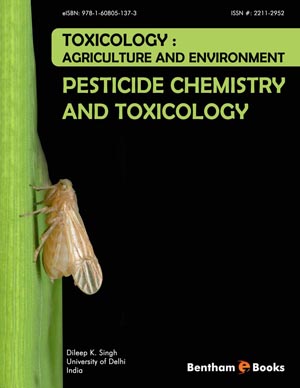Abstract
SHS investigation development is considered from the geographical and historical viewpoint. 3 stages are described. Within Stage 1 the work was carried out in the Department of the Institute of Chemical Physics in Chernogolovka where the scientific discovery had been made. At Stage 2 the interest to SHS arose in different cities and towns of the former USSR. Within Stage 3 SHS entered the international scene. Now SHS processes and products are being studied in more than 50 countries.
Abstract
In this chapter pesticide metabolism has been described. Pesticide Metabolism is typically a two stage process. These are Phase I and Phase II reactions. Phase I reactions normally add a functional (polar reactive) group to the foreign molecule which enables the phase 2 reaction to take place. These reactions are catalyzed by the cytochrome P450 group of enzymes and other enzymes which are associated with endoplasmic reticulum. Phase I reactions includes, Microsomal oxidation and Extramicrosomal oxidation reactions. Phase II reactions are conjugation reactions and involve the covalent linkage of the toxin or phase I product to a polar compound. In general, conjugated products are ionic, polar, less lipid soluble, less toxic and easily excretable from body.
All reactions of pesticide metabolism are described using chemical structure with possible target sites and enzyme involved.
Keywords:
Phase I reaction; Phase II reaction; Microsomal oxidation reactions; Cytochrome P450; NADPH Cytochrome c reductase; Epoxidation and aromatic hydroxylation; O-dealkylation; N-dealkylation; Sdealkylation; Desulfuration; S-oxidation; Reduction reactions, Hydrolysis; Conjugation reactions; Methylation.
Recommended Chapters
We recommend

Authors:Bentham Science Books


 Download PDF Flyer
Download PDF Flyer



